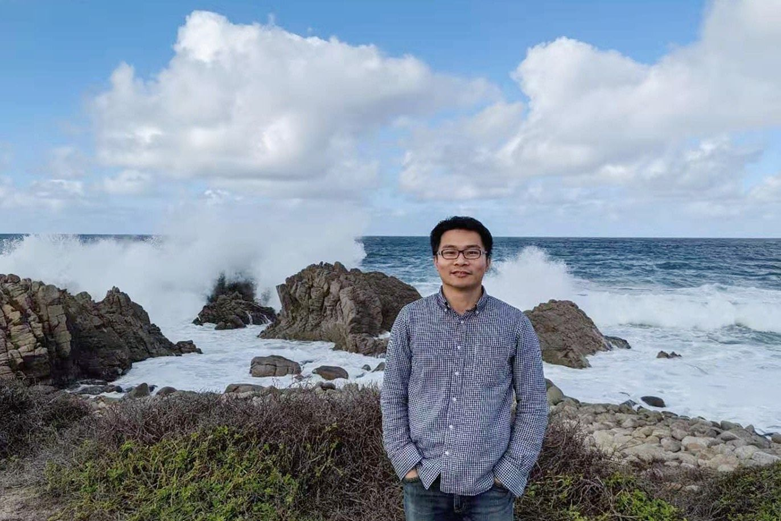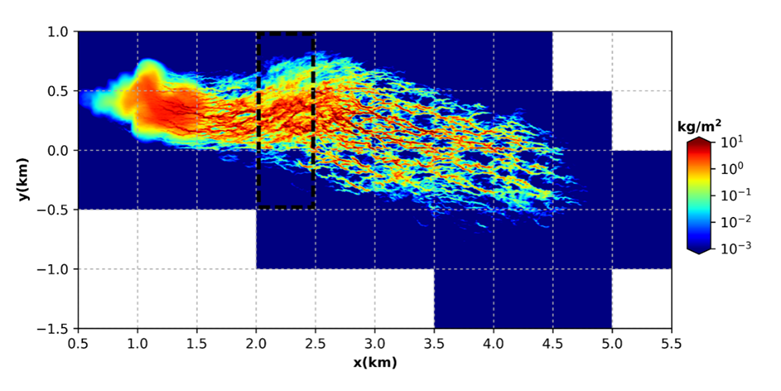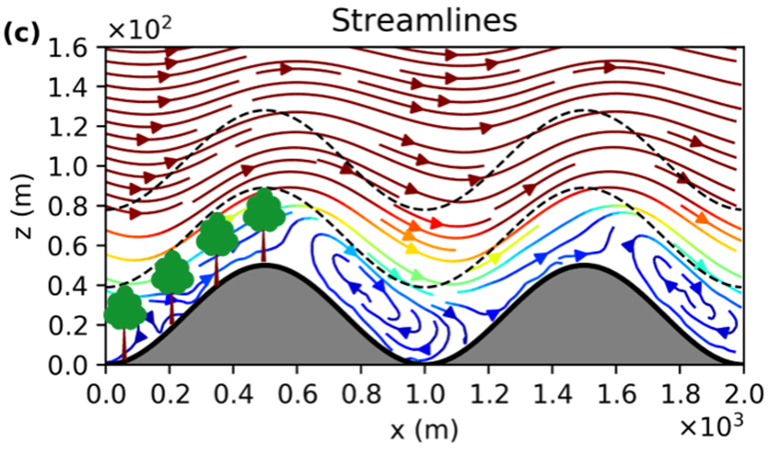Dr. CHEN Bicheng is an associate professor of physical oceanography at the State Key Laboratory of Marine Environmental Science. He received his B.S. and M.S degrees from the Department of Atmospheric and Oceanic Sciences at Peking University in 2010 and 2013. In 2017, he received his Ph.D. from the Department of Meteorology, Pennsylvania State University. From September 2017, Dr. Chen was engaged in postdoctoral projects at the University of California, Los Angeles, and University of California, Berkeley. In December 2021, he joined Xiamen University and is currently funded by the Nanqiang Young Talents Supporting Program (type B).

【Dr. CHEN Zhicheng in 2019 off the coast of California】
Dr. Chen's research interests focus on fluid dynamics in oceanic and atmospheric boundary layers and substance transport and dispersion within these regions. His specific research topics include wave-current interactions in the ocean, oil dispersion and mixing in the ocean mixed layer, and atmospheric canopy flow over rolling topographies. These specific topics deal with fluxes in the presence of complex interfaces, which has been determined to be one of the six most challenging issues in boundary layer meteorology by Dr. Margaret A. Lemone, a member of the National Academy of Engineering (USA).
The primary research tool used in Dr. Chen's group is the large-eddy simulation (LES). LES is an advanced computational fluid dynamics technique that is able to resolve most three-dimensional small-scale motions, such as turbulence, in the ocean and atmosphere. As such, it has become one of the most popular tools for exploring fluid dynamics and flux parameterizations in conditions where field observations are not feasible. Combined with techniques such as the Lagrangian tracking model (LTD), Dr. Chen's group can track various types of tracers' (e.g., gases, particles) motions and trajectories within different types of turbulent flows, revealing the transport and mixing process for certain substances within the ocean or atmosphere.

【Regular banded Langmuir turbulence formed by the interaction of ocean surface currents and waves. The presence of this turbulence can greatly promote the mixing of material at the surface of the ocean】
While abroad, Dr. Chen was involved in research projects grouped into two major branches, depending on the specific fluid types (ocean or atmosphere).
For the oceanic part, he joined two projects funded by the Gulf of Mexico Research Initiative (GoMRI). These projects investigate the impacts of oil, dispersed oil, and dispersants on Gulf of Mexico ecosystems following the Deepwater Horizon oil spill (the world's largest oil spill event). In his work with these projects Dr. Chen found significant modulations in horizontal transport and vertical oil mixing by Langmuir turbulence, a specific type of turbulence generated by wave-current interactions. Current regional models have not captured these effects, causing large transport errors. Moreover, he further estimated the potential implications of applying oil dispersants, chemical compounds used to reduce droplet sizes and enhance vertical mixing. The results show that oil dispersants can significantly change the oil’s horizontal dilution rate, trapping zone, and transport routes despite unchanged flow conditions. These transport effects need to be considered in future oil spill remediation efforts.

【Oil pollution diffusion process under the action of a submesoscale eddy and turbulence. The area covered by oil pollution in the figure is represented by the column concentration of oil pollution. It is noted that the oil mass exhibits both the meandering characteristics of submesoscale circulation and the banded characteristics of Langmuir turbulence.】
For the atmospheric part, he joined one project funded by the National Science Foundation (USA). The goal is to seek primary error sources in forest tower measurements by testing the validity of the horizontal homogeneity assumption employed in field campaigns over gentle rolling topographies. Based on the solutions from the LES and Lagrangian tracking models, Dr. Chen identified a new unique in-canopy pathway over rolling topography for tracer escape, formed by the co-action of mean advection and turbulent transport. Due to this pathway, a strong “chimney effect” for substance transport is formed above the canopy, leading to the breakdown of the horizontal homogeneity condition even in the presence of a very gentle topography. Notably, this effect gets intensified as it gets close to the surface which might have a considerable impact on the transport of CO2 emitted from soil respiration; however, future studies are needed to investigate this potential process.

【Overmountain air FLOW in the canopy of vegetation on gently undulating terrain. Note that the leeward side of the terrain will form a significant backflow area, which can transport the material from the bottom of the mountain to the top of the mountain near the surface.】
The results of the above research projects have been published in Ocean Modelling, the Journal of Geophysical Research: Oceans, Physical Review Fluids, the Quarterly Journal of the Royal Meteorological Society and the Journal of Geophysical Research: Atmospheres.
The characteristics of Dr. Chen's work are to investigate small-scale turbulent motions and mixing using numerical modeling techniques. Because of the direct turbulence-resolving feature of LES and the infeasibility of field observation in boundary layers with complex interfaces, Dr. Chen's research usually observes complex flow structures with numerous details and involves direct flux calculations in the entire three-dimensional space using only numerical data instead of traditional field data. His research utilizes high-performance programming languages such as Python, Fortran, and Julia.
His next project will investigate the coupling between the oceanic surface boundary layer (SBL) and bottom boundary layer (BBL) in shallow-water coastal regions. The turbulent flow associated with this coupling controls substance mixing and exchanges within these regions, but previous studies rarely investigated this process. The investigations of SBL-BBL coupling will help clarify important processes such as air-sea exchanges, diapycnal transport, and sediment re-suspension in the coastal ocean.
Dr. Chen is building his research group at MEL. If any students are interested in his research areas about oceanic and atmospheric boundary layers or numerical techniques specializing in programming languages such as Python, Fortran, and Julia, please feel free to contact him at bchen@xmu.edu.cn. For more information please visit: https://mel2.xmu.edu.cn/faculty/bichengchen/.